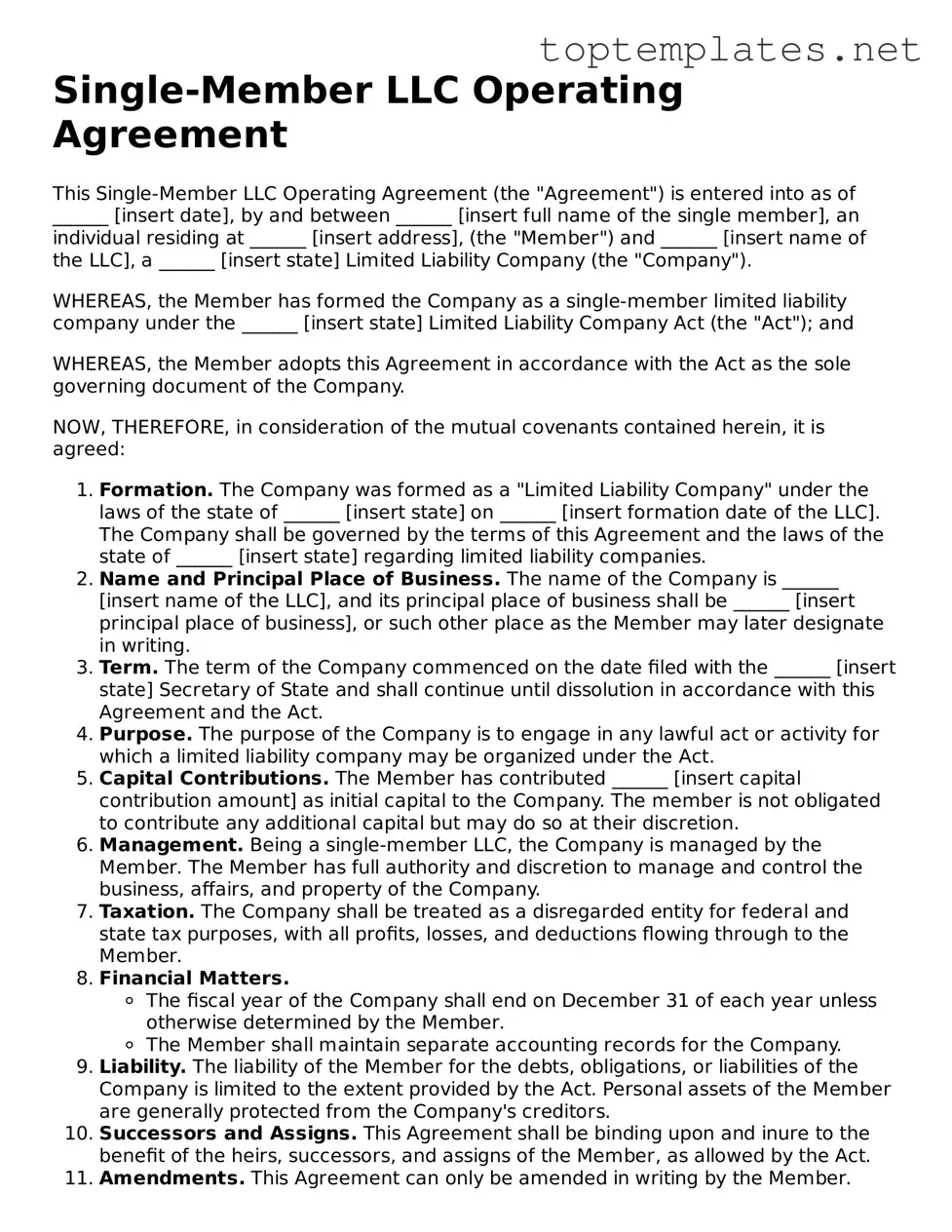What is a Single-Member Operating Agreement?
A Single-Member Operating Agreement is a legal document that outlines the structure, operations, and guidelines of a Limited Liability Company (LLC) that has only one owner. It serves as a fundamental framework for how the business will be managed, detailing every aspect from financial decisions to daily operations, despite the company being owned by a solitary individual. This agreement not only solidifies operational procedures but also reinforces the owner's limited liability status, distinguishing the owner's personal assets from the business's liabilities.
Why is having a Single-Member Operating Agreement important?
Although not always legally required, having a Single-Member Operating Agreement is crucial for several reasons. First, it provides official documentation that strengthens the separation between the owner's personal and business assets, which is essential for maintaining limited liability protection. Additionally, in the event of legal disputes or if the business is sold, this agreement serves as a clear outline of the owner’s intentions and the business's operating procedures, ensuring the continuity and stability of the LLC. It also clarifies operational matters for banks, lenders, and other entities requiring detailed insight into the business's structure.
What should be included in a Single-Member Operating Agreement?
This agreement should comprehensively address several key areas, including the LLC's name and principal place of business; the nature of the business; the name and address of the LLC's registered agent; the LLC’s term of duration; how the LLC will be taxed; the owner's contributions to the LLC; how profits, losses, and distributions will be handled; the process for amending the agreement; and the procedures for dissolving the LLC. Detailed provisions regarding the management of the LLC and the owner’s powers and duties also form an essential part of the agreement.
Can the Single-Member Operating Agreement be amended?
Yes, the Single-Member Operating Agreement can be amended. Since business circumstances and personal goals may change over time, the agreement allows for modifications. Generally, the initial agreement should outline the procedure for making amendments. Typically, any changes to the agreement must be in writing and signed by the LLC's sole member, ensuring that the document remains current and relevant to the business’s needs.
Is it mandatory to file the Single-Member Operating Agreement with state authorities?
No, it is not generally required to file the Single-Member Operating Agreement with state authorities. Most states do not ask for this document during the LLC formation process or as part of annual reporting requirements. Instead, the agreement should be kept with the business’s important records, readily accessible for reference, and provided when needed to financial institutions, potential buyers of the business, or in legal situations as proof of the LLC’s operational structure.
How does a Single-Member Operating Agreement protect the owner's assets?
The Single-Member Operating Agreement plays a significant role in maintaining the liability shield between the owner's personal assets and business debts or liabilities. By clearly documenting the business as a separate legal entity, it helps in asserting the owner's limited liability protection, especially in legal disputes. This distinction is vital for preventing personal assets from being targeted to satisfy business debts or judgments against the LLC.
What happens to the Single-Member Operating Agreement if the business is sold?
Should the business be sold, the Single-Member Operating Agreement can either be transferred to the new owner—who may opt to amend it—or be dissolved along with the sale. The sale process typically includes terms that address the transfer or termination of the operating agreement, ensuring that all parties are aware of their rights and obligations concerning the business’s operational procedures and structure.
Can a Single-Member Operating Agreement prevent disputes in business?
While a Single-Member Operating Agreement is designed for an LLC with only one owner and may not directly deal with disputes between multiple owners, it can still help prevent disputes related to the business operations from external parties. By outlining clear procedures for managing the LLC, including financial management, dispute resolution processes, and operational controls, the agreement provides a clear roadmap that may help in avoiding misunderstandings or conflicts with vendors, employees, and other parties.
How often should the Single-Member Operating Agreement be reviewed?
It is wise to review the Single-Member Operating Agreement annually or whenever major changes occur in the business or its operations. This ensures that the agreement remains aligned with the current state of the business and the owner’s objectives. Regular reviews can also help in identifying any provisions that may need updating due to changes in laws or the business environment, maintaining the document’s effectiveness and relevance.
